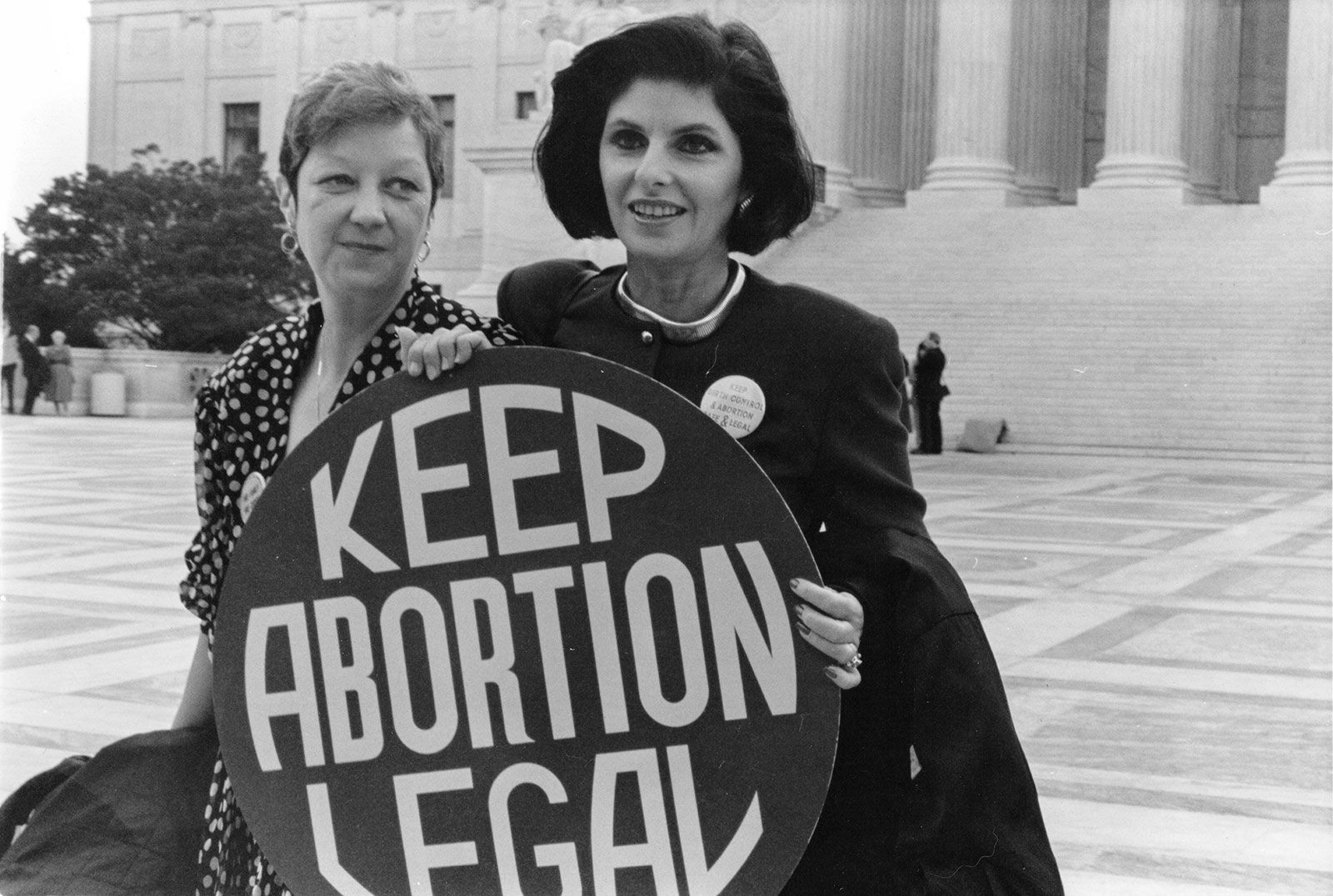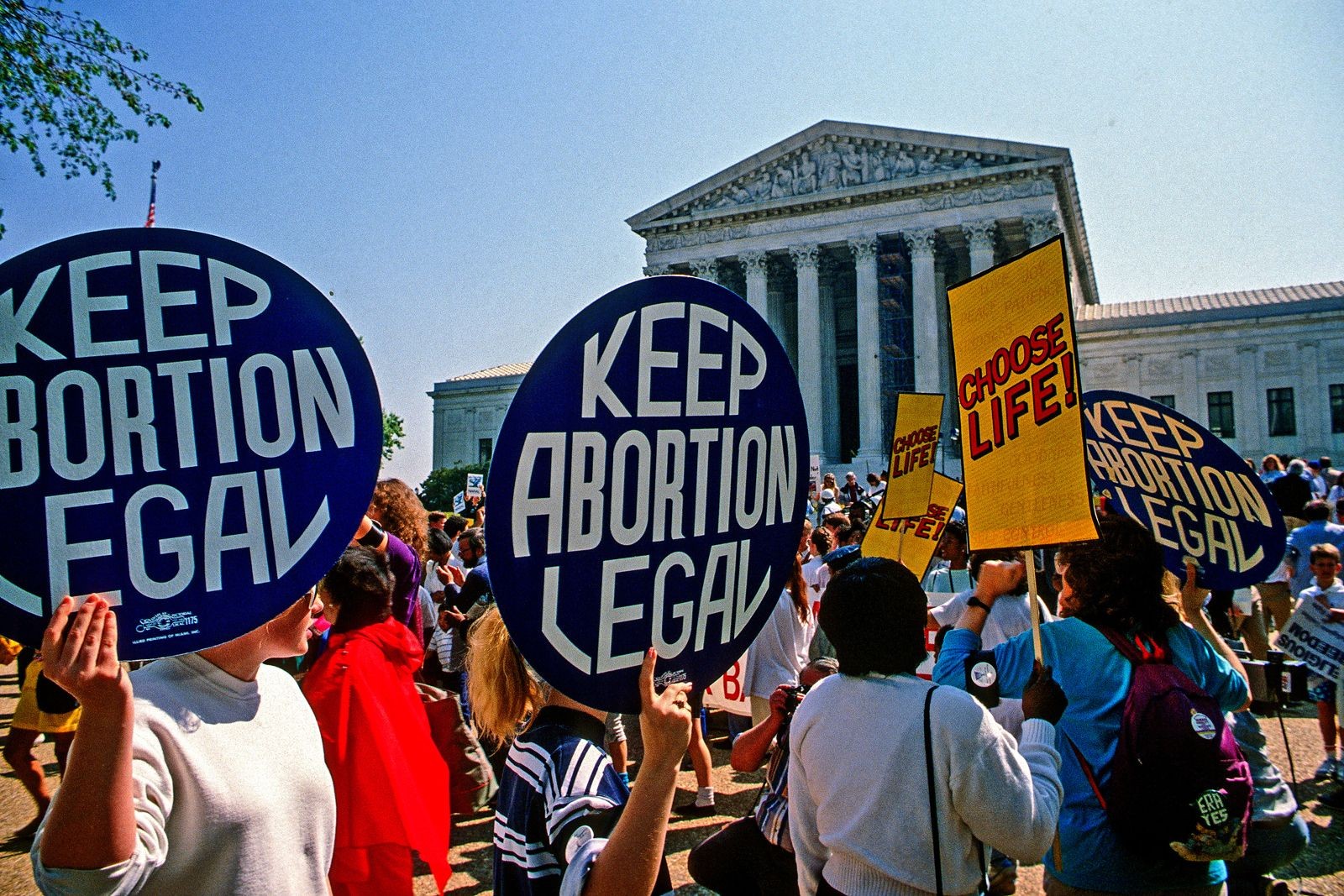Abortion legality: a multifaceted debate demands thorough exploration. WHY.EDU.VN delves into the complexities, providing comprehensive insight and shedding light on the various perspectives surrounding reproductive rights. Let’s explore the arguments and legal aspects for a balanced understanding of abortion rights and bodily autonomy. Discover knowledge about reproductive healthcare and family planning now.
1. A Historical Overview of Abortion
Abortion, the termination of a pregnancy, has a long and complex history, predating modern medicine and legal frameworks. Exploring the history provides crucial context for understanding contemporary debates.
1.1. Ancient Practices and Perspectives
Ancient civilizations had varying attitudes toward abortion.
| Civilization | Practices |
|---|---|
| Egypt | The Ebers papyrus (c. 1550 BCE) contained recipes for inducing abortion using plant fibers, honey, and crushed dates. |
| Greece | Abortion was generally accepted. Aristotle advocated for it to control family size, especially before “sense and life” began. |
| Rome | Initially tolerated, abortion later became viewed as a crime against the husband, depriving him of potential offspring. |


This papyrus, one of many ancient Egyptian medical writings, included a prescription for inducing an abortion; it was written in hieratic text, c. 1550 bce.
1.2. “Quickening” and Early Legal Statutes
Throughout much of Western history, abortion was often viewed differently depending on the stage of pregnancy. The concept of “quickening,” when the first fetal movement is felt (typically between 13-25 weeks), was a significant marker.
- Before Quickening: Abortion was often not considered a criminal act.
- After Quickening: Legal and moral views became more restrictive.
Early American abortion laws were based on British common law, which distinguished between pre- and post-quickening abortions. However, these procedures were unregulated and often unsafe.
1.3. The 19th-Century Shift: Criminalization Efforts
The 19th century saw a significant shift in attitudes toward abortion, leading to increased criminalization efforts in the United States.
- 1821: Connecticut became the first U.S. state to criminalize abortion, banning the sale of abortion-inducing “poisons.”
- 1845: New York criminalized a woman’s participation in her own abortion, regardless of the pregnancy stage.
Dr. Horatio Robinson Storer, a pro-life advocate, successfully campaigned to convince the American Medical Association to support the nationwide outlawing of abortion. By the early 1900s, most states had banned abortion, with varying exceptions.
2. Roe v. Wade: A Landmark Decision
The legal landscape of abortion in the United States dramatically changed with the Supreme Court’s decision in Roe v. Wade (1973).
Norma McCorvey, left, who was Jane Roe in the 1973 Roe v. Wade case, with her attorney, Gloria Allred, outside the Supreme Court in April 1989.
2.1. The Trimester Framework
Roe v. Wade established a framework based on pregnancy trimesters:
- First Trimester (0-12 weeks): States could not interfere with a woman’s right to an abortion.
- Second Trimester (13-28 weeks): States could regulate abortion to protect maternal health.
- Third Trimester (29-40 weeks): States could regulate or prohibit abortion to protect the potentiality of human life, except when necessary to preserve the mother’s life or health.
The decision recognized a woman’s right to privacy under the Fourteenth Amendment, extending to her decision whether or not to have an abortion.
2.2. Norma McCorvey: The “Jane Roe” Story
The plaintiff in Roe v. Wade, Norma McCorvey, sought an abortion in Texas, where it was illegal except to save the mother’s life. She initially claimed her pregnancy resulted from rape but later retracted this claim. McCorvey never had the abortion and eventually gave the baby up for adoption.
In a surprising turn, McCorvey later became a pro-life activist, even claiming she was paid to support the anti-abortion cause.
3. Subsequent Federal Regulations and Policies
Following Roe v. Wade, various federal regulations and policies shaped the abortion debate and access to abortion services.
3.1. The Hyde Amendment
Enacted in 1976, the Hyde Amendment prohibits the use of federal funds (specifically Medicaid) for abortion services, except in cases of rape, incest, or to save the mother’s life. This amendment has been renewed annually with revisions, significantly impacting low-income women’s access to abortion.
3.2. The Mexico City Policy
Also known as the “global gag rule,” the Mexico City Policy restricts U.S. funding to international non-governmental organizations that perform or promote abortion services. This policy has been rescinded and reinstated by different presidential administrations, creating instability in global reproductive health funding.
| President | Action | Date |
|---|---|---|
| Ronald Reagan | Announced Policy | Aug 1984 |
| Bill Clinton | Rescinded Policy | Jan 22, 1993 |
| George W. Bush | Reenacted Policy | Jan 22, 2001 |
| Barack Obama | Rescinded Policy | Jan 23, 2009 |
| Donald Trump | Reinstated Policy | Jan 23, 2017 |
| Joe Biden | Revoked Policy | Jan 28, 2021 |
4. Planned Parenthood v. Casey: The “Undue Burden” Standard
The Supreme Court case Planned Parenthood v. Casey (1992) reaffirmed the constitutional right to abortion but introduced the “undue burden” standard for state regulations.
4.1. Abandoning the Trimester Framework
Casey abandoned the rigid trimester framework of Roe v. Wade and adopted a less restrictive standard for state regulations.
4.2. The “Undue Burden” Test
The Court ruled that states could impose regulations on abortion as long as they did not create an “undue burden” on a woman seeking an abortion. This standard allowed states to implement requirements such as waiting periods, parental consent for minors, and mandatory counseling.
5. Federal Regulation Post-Casey
Following Planned Parenthood v. Casey, federal legislation continued to shape the landscape of abortion access.
5.1. Partial-Birth Abortion Ban Act of 2003
This act banned intact dilation and extraction, often referred to as “partial-birth” abortion. The Supreme Court upheld the act in Gonzales v. Carhart (2007), ruling that it did not impose an undue burden on a woman’s right to abortion.
5.2. The Affordable Care Act (ACA) and Abortion
The Affordable Care Act (ACA) sparked debate regarding abortion funding. Pro-life advocates claimed the ACA would allow federal funding for abortions, a claim denied by abortion rights supporters. President Obama signed an executive order to ensure that federal funds were not used for abortion services, reaffirming Hyde Amendment restrictions.
6. Dobbs v. Jackson Women’s Health Organization: Overturning Roe and Casey
In a landmark decision on June 24, 2022, the Supreme Court overturned Roe v. Wade and Planned Parenthood v. Casey in Dobbs v. Jackson Women’s Health Organization. This decision eliminated the federal constitutional right to abortion, returning the issue of abortion regulation to individual states.
6.1. The End of Federal Protection for Abortion Rights
Justice Samuel Alito wrote the majority opinion, arguing that the right to abortion was not deeply rooted in the nation’s history and traditions. The decision allows states to regulate or ban abortion as they see fit.
6.2. Dissents and Reactions
Justices Stephen Breyer, Sonia Sotomayor, and Elena Kagan dissented, expressing sorrow for the loss of a fundamental constitutional protection for millions of American women. The decision sparked widespread protests and debates across the country.
7. Post-Dobbs: The Current Legal Landscape
The overturning of Roe v. Wade has led to a fragmented legal landscape regarding abortion access in the United States.
7.1. State Laws and Trigger Bans
Many states have enacted or are considering laws that restrict or ban abortion. Some states had “trigger bans” in place, which went into effect immediately after the Dobbs decision.
7.2. Federal Responses
President Biden signed an Executive Order on Protecting Access to Reproductive Healthcare Services, directing HHS to protect access to abortion and other reproductive services. However, legal challenges continue to arise, creating uncertainty and confusion.
7.3. Legal Battles and Ongoing Conflicts
Conflicts between state and federal laws persist, leading to ongoing legal battles. For example, Texas sued the federal government over the Emergency Medical Treatment and Labor Act (EMTALA), arguing that it does not mandate access to abortion.
8. Pro-Choice and Pro-Life Perspectives: A Deeper Dive
The abortion debate is deeply divided between pro-choice and pro-life perspectives. Understanding the core arguments of each side is crucial for a nuanced understanding of the issue.
8.1. Pro-Choice Arguments
Pro-choice advocates argue that:
- Bodily Autonomy: Women have the right to control their own bodies and make decisions about their reproductive health.
- Privacy: The decision to have an abortion is a private matter between a woman and her doctor.
- Equality: Restricting abortion access disproportionately affects women, particularly low-income women and women of color.
- Health and Safety: Legal abortion is safer than illegal abortion, reducing the risk of complications and death.
- Personal Circumstances: Women may choose abortion for various reasons, including economic hardship, health concerns, or personal circumstances.
8.2. Pro-Life Arguments
Pro-life advocates argue that:
- Sanctity of Life: Life begins at conception, and abortion is the taking of a human life.
- Moral Wrongness: Abortion is morally wrong and should be prohibited or severely restricted.
- Adoption as an Alternative: Adoption is a viable alternative to abortion, providing a loving home for the child.
- Fetal Rights: The fetus has a right to life, and the state has a responsibility to protect that right.
- Medical Risks: Abortion carries medical risks for women, including potential complications and long-term health effects.
Protestors for and against abortion.
9. Public Opinion on Abortion: Trends and Shifts
Public opinion on abortion in the United States has remained relatively stable over the years, with a majority of Americans supporting legal abortion in at least some circumstances.
9.1. Support for Legal Abortion
According to a 2024 Pew Research Center poll, 63% of Americans believe abortion should be legal in all or most cases, while 36% believe it should be illegal in all or most cases.
9.2. Partisan Divides
Significant partisan divides exist on the issue, with Democrats more likely to support legal abortion and Republicans more likely to oppose it.
9.3. The Impact of Dobbs
The Dobbs decision has likely influenced public opinion, with some polls showing increased support for legal abortion in response to state-level restrictions.
| Poll Date | Pro-Choice (%) | Pro-Life (%) | Source |
|---|---|---|---|
| Jan 2025 | 62 | 36 | Knights of Columbus/Marist |
| June 2022 | 55 | 39 | Gallup |
| 2017 | 57 | 40 | Pew Research |
10. The Global Perspective: Abortion Laws Around the World
Abortion laws vary widely around the world, ranging from complete bans to unrestricted access.
10.1. Countries with Restrictive Laws
Some countries, primarily in Latin America, Africa, and the Middle East, have strict abortion laws, often prohibiting it altogether or allowing it only to save the mother’s life.
10.2. Countries with Liberal Laws
Many European countries, Canada, and Australia have liberal abortion laws, allowing it for any reason during the first trimester or later in cases of medical necessity or socioeconomic factors.
10.3. France: A Constitutional Guarantee
In March 2024, France became the first country to enshrine abortion rights in its constitution, guaranteeing abortion up to 14 weeks as a “guaranteed freedom.”
11. Ethical Considerations: When Does Life Begin?
The ethical debate surrounding abortion often centers on the question of when life begins.
11.1. Differing Viewpoints
Different viewpoints exist on this issue:
- Conception: Some believe life begins at conception, when the sperm fertilizes the egg.
- Fetal Viability: Others believe life begins at fetal viability, when the fetus can survive outside the womb.
- Sentience: Some argue that life begins when the fetus develops sentience, the ability to feel pain or experience consciousness.
11.2. The Role of Science and Religion
Science and religion play significant roles in shaping these viewpoints, with varying interpretations of biological development and moral principles.
12. Socioeconomic Factors: The Impact on Women’s Lives
Socioeconomic factors significantly impact women’s reproductive choices and access to abortion services.
12.1. Poverty and Abortion
Low-income women are disproportionately affected by restrictions on abortion access, as they may lack the resources to travel to states with legal abortion or afford the procedure.
12.2. Education and Opportunities
Access to abortion can enable women to pursue education and career opportunities, improving their economic well-being and social mobility.
12.3. The Impact on Families
Unintended pregnancies can place a strain on families, particularly those already struggling with poverty or other challenges.
13. Medical Aspects: Abortion Procedures and Safety
Understanding the medical aspects of abortion is crucial for informed decision-making and ensuring access to safe and effective services.
13.1. Types of Abortion Procedures
Different types of abortion procedures are available, depending on the stage of pregnancy:
- Medication Abortion: Using drugs like mifepristone and misoprostol to terminate the pregnancy.
- Surgical Abortion: Including vacuum aspiration, dilation and curettage (D&C), and dilation and extraction (D&E).
13.2. Safety and Risks
Legal abortion is generally safe, with low rates of complications. However, illegal abortions carry significant risks, including infection, hemorrhage, and death.
13.3. The Role of Healthcare Providers
Healthcare providers play a vital role in providing abortion services and counseling women on their reproductive health options.
14. The Future of Abortion Rights in the United States
The future of abortion rights in the United States remains uncertain, with ongoing legal battles and political debates.
14.1. State-Level Actions
State legislatures and courts will continue to shape the legal landscape of abortion access, with some states expanding access and others restricting it.
14.2. Federal Legislation
Efforts to pass federal legislation protecting or restricting abortion rights are likely to continue, although the prospects for success depend on the political climate.
14.3. The Role of Activism and Advocacy
Activism and advocacy will continue to play a crucial role in shaping the future of abortion rights, with pro-choice and pro-life groups working to advance their respective agendas.
15. Conclusion: Why the Abortion Debate Matters
The debate over abortion is a complex and multifaceted issue with profound implications for women’s health, equality, and autonomy. It touches on fundamental questions about the role of government, individual rights, and moral values. As the legal and political landscape continues to evolve, it is essential to engage in thoughtful and respectful dialogue to find common ground and promote policies that support the well-being of all members of society.
Navigating the complexities surrounding abortion can be challenging, but WHY.EDU.VN is here to help. Do you have questions about reproductive rights, legal precedents, or the ethical considerations of abortion? Visit why.edu.vn at 101 Curiosity Lane, Answer Town, CA 90210, United States, or contact us via Whatsapp at +1 (213) 555-0101. Our team of experts is ready to provide you with the answers and insights you need. Don’t hesitate—reach out today and let us help you explore the complexities of this important topic.
FAQ: Abortion Legality and Related Questions
Here are some frequently asked questions about abortion legality and related issues:
- What is the current legal status of abortion in the United States?
Following the Dobbs decision, the legal status of abortion varies by state. Some states have banned or severely restricted abortion, while others continue to protect abortion access. - What was Roe v. Wade?
Roe v. Wade was a landmark Supreme Court decision in 1973 that established a woman’s constitutional right to abortion. - What is the “undue burden” standard?
The “undue burden” standard, established in Planned Parenthood v. Casey, allows states to regulate abortion as long as the regulations do not create a substantial obstacle to a woman seeking an abortion. - What is the Hyde Amendment?
The Hyde Amendment prohibits the use of federal funds for abortion services, except in cases of rape, incest, or to save the mother’s life. - What are the main arguments for legal abortion?
Arguments for legal abortion include bodily autonomy, privacy, equality, and health and safety. - What are the main arguments against legal abortion?
Arguments against legal abortion include the sanctity of life, moral wrongness, and the belief that life begins at conception. - How does public opinion view abortion in the United States?
A majority of Americans support legal abortion in at least some circumstances, although significant partisan divides exist on the issue. - How do abortion laws vary around the world?
Abortion laws vary widely around the world, ranging from complete bans to unrestricted access. - What are the different types of abortion procedures?
Abortion procedures include medication abortion and surgical abortion. - What are some of the potential impacts of restricting abortion access?
Restricting abortion access can disproportionately affect low-income women, limit educational and career opportunities, and place a strain on families.
